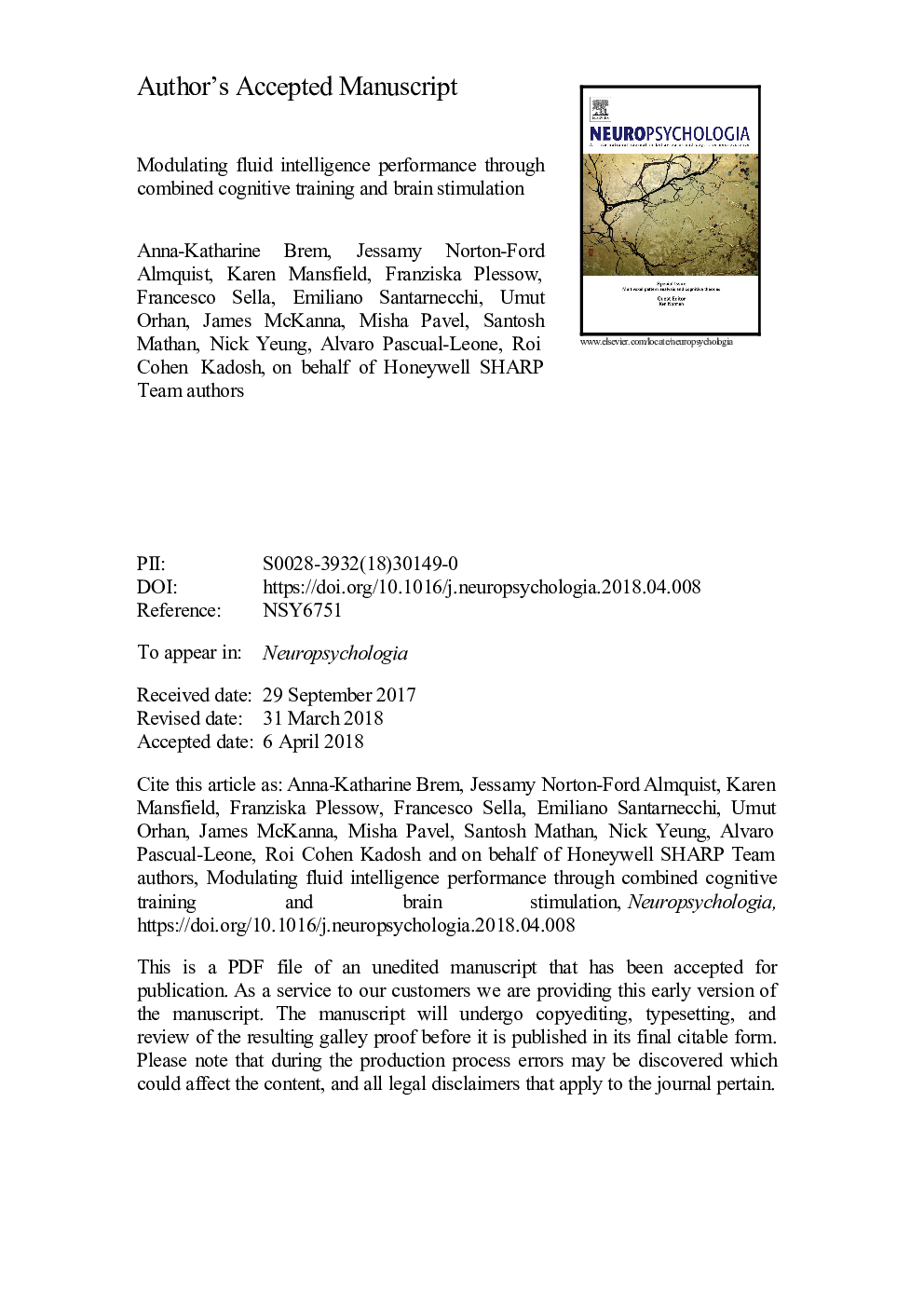| Article ID | Journal | Published Year | Pages | File Type |
|---|---|---|---|---|
| 10226721 | Neuropsychologia | 2018 | 26 Pages |
Abstract
82 participants were randomly assigned to receive transcranial direct current stimulation (tDCS), random noise stimulation (tRNS), multifocal alternating current stimulation at 40â¯Hz (mftACS), or multifocal tDCS (mftDCS) in combination with an adaptive and synergistic executive function (EF) training, or to a no-contact control group. EF training consisted of gamified tasks drawing on isolated as well as integrated executive functions (working memory, inhibition, cognitive flexibility). Transfer was assessed with a combined measure of Gf including three established tests (Bochumer Matrizentest - BOMAT, Raven's Advanced Progressive Matrices - RAPM, and Sandia Matrices). We found significant improvements in Gf for the tDCS, mftDCS, and tRNS groups when compared with the no-contact group. In contrast, the mftACS group did not improve significantly and showed a similar pattern as the no-contact group. Mediation analyses indicated that the improvement in Gf was mediated through game progression in the mftDCS and tRNS group. Electrical brain stimulation in combination with sustained EF training can lead to transfer effects in Gf, which are mediated by training progression.
Keywords
Related Topics
Life Sciences
Neuroscience
Behavioral Neuroscience
Authors
Anna-Katharine Brem, Jessamy Norton-Ford Almquist, Karen Mansfield, Franziska Plessow, Francesco Sella, Emiliano Santarnecchi, Umut Orhan, James McKanna, Misha Pavel, Santosh Mathan, Nick Yeung, Alvaro Pascual-Leone, Roi Cohen Kadosh,
